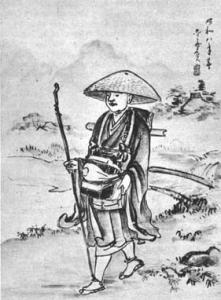There’s an old Facebook meme. It goes when I became a Buddhist my family and friends were all worried. But once I became a Buddha everything became okay.
Let’s look at that first part.
I recall the story of a young woman who joined the San Francisco Zen Center in the very early 1970s. Her parents were terrified she’d joined a cult. Cults were very much a thing. Both something of reality, with a surrender of will and the power of groups. But, for the most part vastly more a frothed up mélange of fear of the different, and especially fear of anyone rejecting the standards and mores of the moment. In this case the family hired a deprogrammer to have her kidnapped. A sad story. And not uncommon in that moment. Kidnapping and deprogramming was a bit of a cottage industry at the time.
There was a brief moment of confrontation where her parents presented themselves and told her that they were responsible. This was to provide the rope for the victim to grasp in the midst of a fairly brutal coming days. This is where things started going off script. She offered them a deal. She’d go through the deprogramming voluntarily. But, at the end, if she decided to return to the Zen center, they would honor her decision.
Reluctantly they agreed. She did the program. And it was brutal. And when it was over, she returned. Today she is a venerated elder within the Zen community.
There is a moment when we notice within our bones that something is wrong. As I’ve noted, we can experience this sense of dislocation in any number of ways. But once we do, if we also capture a hint there may be a way through, and then we set a clear intention, then worlds change.
Not least is our most intimate world, the world of our family and close friends. There are reasons that young Zen practitioner’s family were terrified. And not just because of the cult scare of the time. There was a fundamental challenge to the world they lived in.
In the Christian allegory Pilgrim’s Progress, the protagonist Christian has a vision of a terrible apocalypse and wishes to embark on a journey to his salvation. He tells his family, his spouse and his children. And they don’t believe him. So, he embarks on the way by himself.
I’ve read a delightful critique of that moment, an unsigned paper that observes this abandoning of family is not very Christian. And opines how he should have found a way to bring his family along. In the allegory all is well by the second part. But the author raises a real point. It’s not unlike the current feminist critique of the Gautama Siddhartha’s own abandonment of his wife and child along with his responsibilities as a prince.
How do we throw ourselves whole heartedly into the way? How do we honor that vow? When our very lives are tangled, how do we make our way?
Another image comes to mind. This was talking with a clerk in a large Department store. It turned out he had been a Catholic monk for more than twenty years. He left because his mother was sick and had few resources and if he didn’t take care of her, she probably would have been on the streets. What I found particularly compelling in our brief conversation, while the pain of leaving the monastery was clearly on his heart, he also was clear he’d made a right decision. And, most important, he seemed to feel he was still fully engaged in the great matter.
My friend the Zen teacher Grace Schireson talks about once being confronted for being married and a Zen priest. When asked how she squared that circle she replied, “I keep all my vows.” If a koan is an assertion about the intimate way and an invitation to stand in that place, I keep all my vows is definitely a koan.
So, when we take up the way there is a lot of confusion. And it can involve a lot of hurt.
In traditional Buddhism entering the way means “leaving home.” In fact, the original Buddhist community was a company of monks. Later a company of monks and nuns. If you couldn’t or wouldn’t take monastic vows the best you really could do was support those who did and hope for a more propitious birth next time around.
Here’s a truth. The critique of Pilgrim’s progress and the abandonment of his family is right. The critique of Gautama Siddhartha abandoning his family and obligations, is right. And Christian’s headlong pursuit of salvation is right. And Siddhartha’s abandonment of his family and embarking on the way led to the possibility of healing for a whole world. He was right.
A lot of rights happening all at once. And with them a whole world of possible hurts. And I think it’s worth noting in both John Bunyan’s story and in the story of the Buddha, the protagonist and his family are eventually brought back together.
With that, what’s the deeper point? What is it that’s wrong with our family that we have to leave? That’s the real question.
For every deeper truth of our lives, we will find a lot of counterfeits. In Buddhism the fundamental analysis is that most of our human suffering comes from grasping after that which is passing. In the grossest of senses one can call that the world. Every moment the world and every part of it is dying.
But if the solution were simply to not care, well, that would be a pretty sad thing all by itself. The deeper question is how do we surrender our grasping? And how do we do it in the situation in which we find ourselves?
For some this might very well lead to some cloister, to trips to India, to entering monasteries in Kyoto or Tassajara or St Catherine’s in the Sinai, or the Abbey of Our Lady of Gethsemani outside of Louisville. The list is long. And any might be a right choice.
With the caveat that I fact we bring it all with us into the cloister, our grasping and our fears and our self-centered opinions. There’s that wonderful cartoon where the guru says to the disciple, “You’ve now completed your training. You have only one more test.” The next panel shows the disciple at home at a Thanksgiving dinner.
The grasping of our family, the fear of our family for what we’re doing when we begin the spiritual quest is tangible.
And. The question is not what it is they fear. The question is what is it that they’re showing you about yourself? What part of your heart is caught up in the grasping? And with that, how do you manifest in this world, this world where there is no escape? Where every act, every thought can either be counterfeit or gold?
What is it that you really need to let go of?
A question to visit and revisit every step of the intimate way.
A koan.













